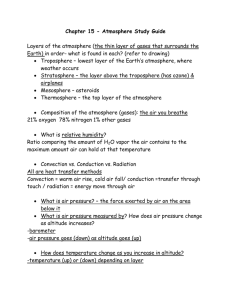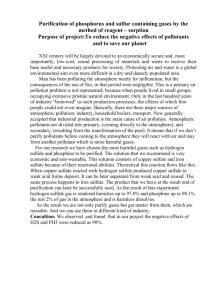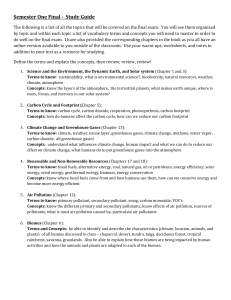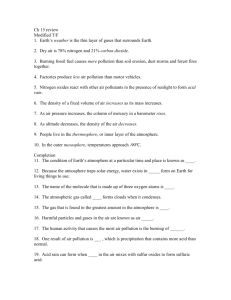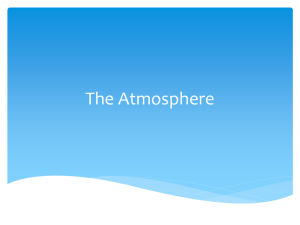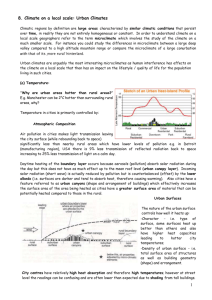eprint_11_20938_457
advertisement
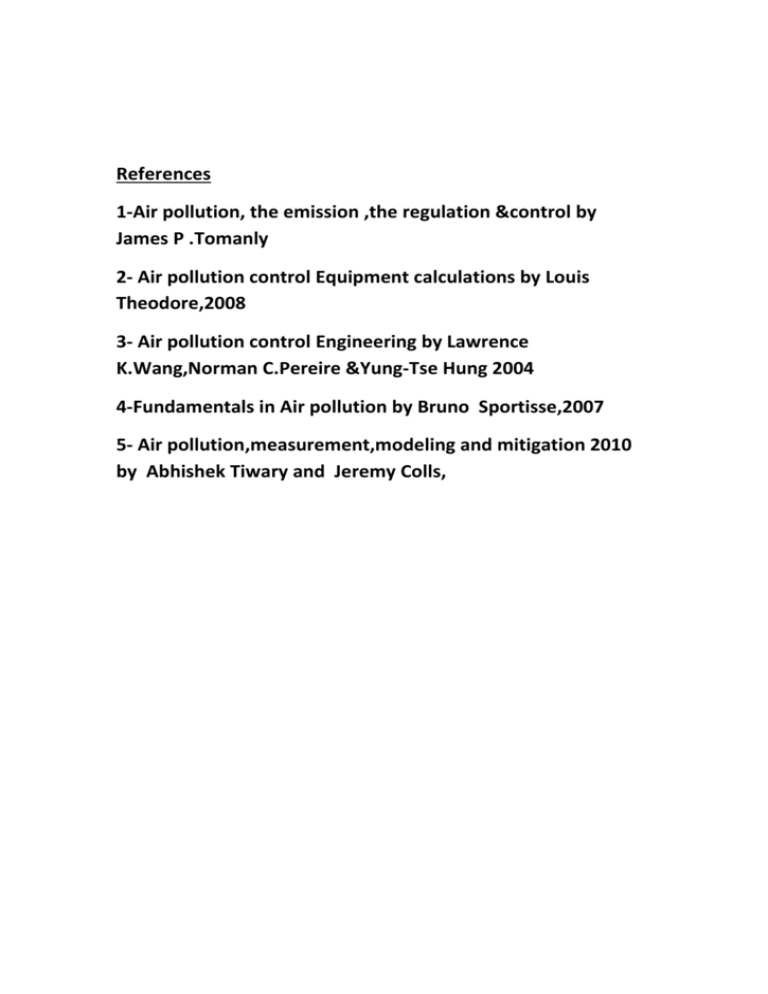
References 1-Air pollution, the emission ,the regulation &control by James P .Tomanly 2- Air pollution control Equipment calculations by Louis Theodore,2008 3- Air pollution control Engineering by Lawrence K.Wang,Norman C.Pereire &Yung-Tse Hung 2004 4-Fundamentals in Air pollution by Bruno Sportisse,2007 5- Air pollution,measurement,modeling and mitigation 2010 by Abhishek Tiwary and Jeremy Colls, What is the air pollution ? The presence of any substances in the atmosphere in quantities which are or may be harmful or injurer to human health ,welfare ,animal or plant life ,or property or unreasonably interfere with enjoyment of life or property. The atmosphere: Is the gaseous envelope that surrounds the earth and constitutes the transition between its surface and the vacuum of space .The atmosphere is compose of primarily of nitrogen (N2) and oxygen (o2)and is made up of many layers of air, each one identified by their thermal characteristics or temp. changes ,chemical composition ,movement &density. Thermosphere(320km) Mesosphere(80km) Stratosphere(50km) Troposphere(12km) Air is a complex mixture made up of many components . The primary components of air are :N2,O2,H2O,( 99% is N2 & O2) ( N2 78%)& (21% O2) ,the remaining percent is CO2,CH4 .H2,Ar Classification of air pollution air pollution can be classified according to many categories: 1-Primary pollutants :are those that emitted directly in the atmosphere from an identifiable source. Examples include carbon monoxide and sulfur dioxide.(CO,NO,NO2, and Hydrocarbon &suspended particles). 2-Secondary pollutants: are those that are produced in the atmosphere by chemical and physical processes from Primary pollutants and natural constituents. Examples Hydrocarbons and Oxides nitrogen pride ozone). Classification According to the origin 1-Natural sources a-wind erosion : PM b-forest fire : PM ,gases c-volcanic eruption:SO2,CO2,PM, stage for months or sever years -----change climate d-biogenic emission :from forest &marsh lands:NH3,CH4.pollen,spores. e-sea spring &evaporation :salt &pm to atmosphere. f- soil microbial process:NO,CH4,H2S.NH3 E-natural decay of organic matter----- large amount of NO leads to O3 formation. 2-Artifical sources A-Industrial and urban sources a-power generation :PM (fly ash ,iron ,aluminum),gases(CO,CO2,SO2,NOX) B-nuclear power plants------radioactive substances c-industrial facilities ; (gases& PM) d-transportation: trucks ,buses ,planes ,boats ,CO,CO2,NOX,SO2. e-waste disposal in landfill(incineration, sewage treatment plants) PM .gases(CO,CH4,H2S). F-construction activities (digging ,paving-----dust. PM.CO) B-Agricultural and rural sources a-dust blowing b-burning-------land cleaning by burning c-pesticides. According to the type 1-Stationary sources 2-Mobile sources According to the height 1-Ground level sources 2-elevated sources ,such stack or building level highway level According to the location 1- Point sources, such as steel mills ,power plant and oil refineries. 2-Line sources, such as highway carrying moving vehicles. 3-Area sources, such as an entire residential area. According to the chemical composition 1- Organic 2-inorganic According to the state of matter 1-Particulates 2-gases.
